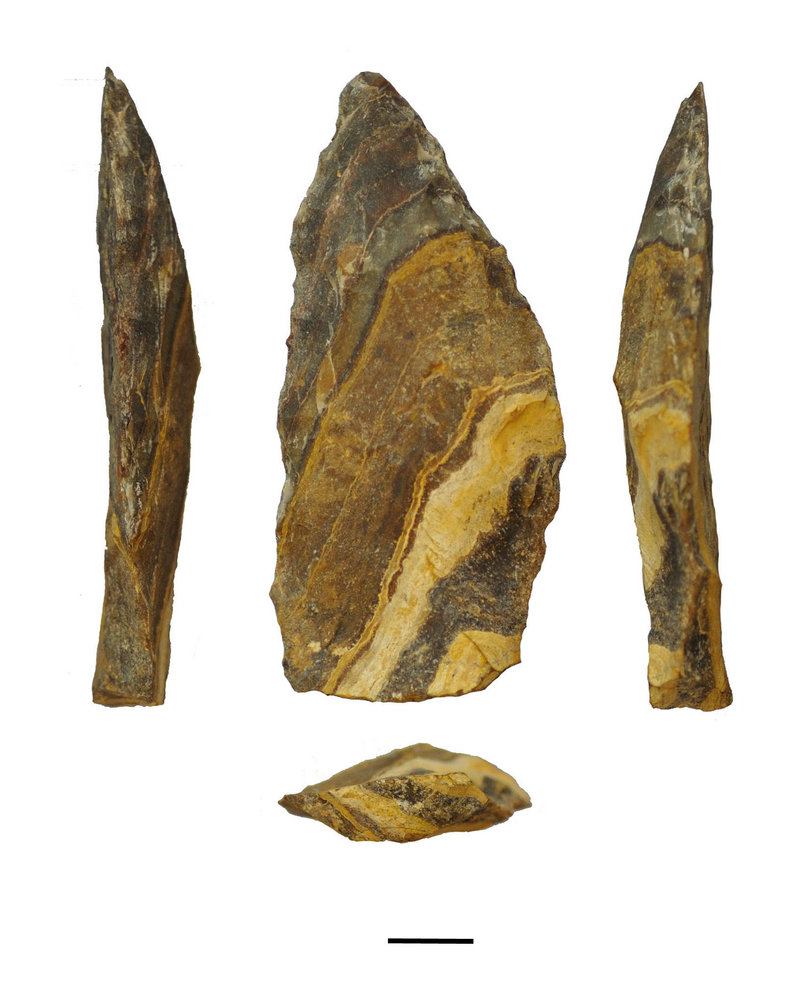LOS ANGELES – It was among early man’s greatest technological feats: a fully engineered weapon that combined a wooden shaft, mixed adhesives and a stone that had been chiseled to a lethal point.
To many anthropologists, the creation of the stone-tipped, or hafted, spear was a watershed moment in human evolution. Not only did it amplify the killing power of early hunters, it also demonstrated clearly that they had developed the capacity for complex and abstract reasoning. Pinning down this moment in prehistory has been difficult, however. It was long held that Neanderthals and Homo sapiens first lashed stone tips to spears 200,000 to 300,000 years ago. But a study published in Friday’s journal Science contends that a third species, Homo heidelbergensis, developed the technology about 500,000 years ago.
Researchers based their findings on 13 stone artifacts uncovered in a sinkhole in South Africa’s Northern Cape province. To confirm that the triangular stones were in fact spear tips and not created through natural processes, the anthropologists created replica spears and used crossbows to fire them at animal carcasses. The chips and marks created during these simulated hunting sessions exactly matched those on the prehistoric artifacts, indicating the ancient marks could not have been caused by weathering or geologic processes.
“This changes the way we think about early human adaptations and capacities before the origin of our own species,” said lead author Jayne Wilkins, a graduate student in the University of Toronto’s anthropology department.
Send questions/comments to the editors.



Success. Please wait for the page to reload. If the page does not reload within 5 seconds, please refresh the page.
Enter your email and password to access comments.
Hi, to comment on stories you must . This profile is in addition to your subscription and website login.
Already have a commenting profile? .
Invalid username/password.
Please check your email to confirm and complete your registration.
Only subscribers are eligible to post comments. Please subscribe or login first for digital access. Here’s why.
Use the form below to reset your password. When you've submitted your account email, we will send an email with a reset code.